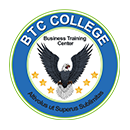Candidates for this exam will demonstrate that they can recognize, write, and debug Python code that will logically solve a problem.
Course Objectives:
- Evaluate an expression to identify the data type Python will assign to each variable.
- Data types include str, int, float, and bool
- Convert between and work with data types.
- Type casting; constructing data structures; indexing and slicing operations
- Determine the sequence of execution based on operator
- Construct and analyze code segments that use branching statements.
- if; elif; else; nested and compound conditionals
- Construct and analyze code segments that perform iteration
- while; for; break; continue; pass; nested loops and loops that include compound conditionals
- Construct and analyze code segments that perform file input and output operations.
- open; close; read; write; append; check existence; delete; with statement
- Construct and analyze code segments that perform console input and output operations.
- Read input from console; print formatted text; use of command line arguments
- Document code segments using comments and documentation strings.
- Use of indentation and white space; comments and documentation strings; pydoc
- Construct and analyze code segments that include function definitions.
- Call signatures; default values; return; def; pass
- Analyze, detect, and fix code segments that have errors.
- Syntax errors; logic errors; runtime errors
- Analyze and construct code segments that handle exceptions.
- Try; except; else; finally; raise
- Perform basic operations using built-in modules.
- math; datetime; io; sys; os; os.path; random
- Solve complex computing problems by using built-in modules.
- math; datetime; random


